Author Archives: Zack Bloom
Author Archives: Zack Bloom

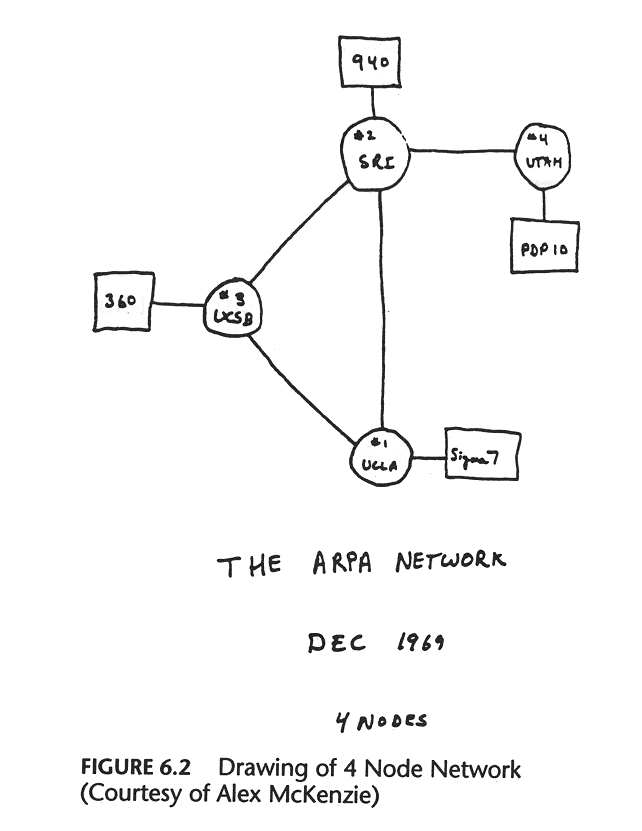
This issue was occuring now because the ARPANET was on the verge of switching from its original NCP protocol, to the TCP/IP protocol which powers what we now call the Internet. With that switch suddenly there would be a multitude of interconnected networks (an ‘Inter... net’) requiring a more ‘hierarchical’ domain system where ARPANET could resolve its own domains while the other networks resolved theirs.
Other networks at the time had great names like “COMSAT”, “CHAOSNET”, “UCLNET” and “INTELPOSTNET” and were maintained by groups of universities and companies all around the US who wanted to be able to communicate, and could afford to lease 56k lines from the phone company and buy the requisite PDP-11s to handle routing.
In the original ARPANET design, a central Network Information Center Continue reading
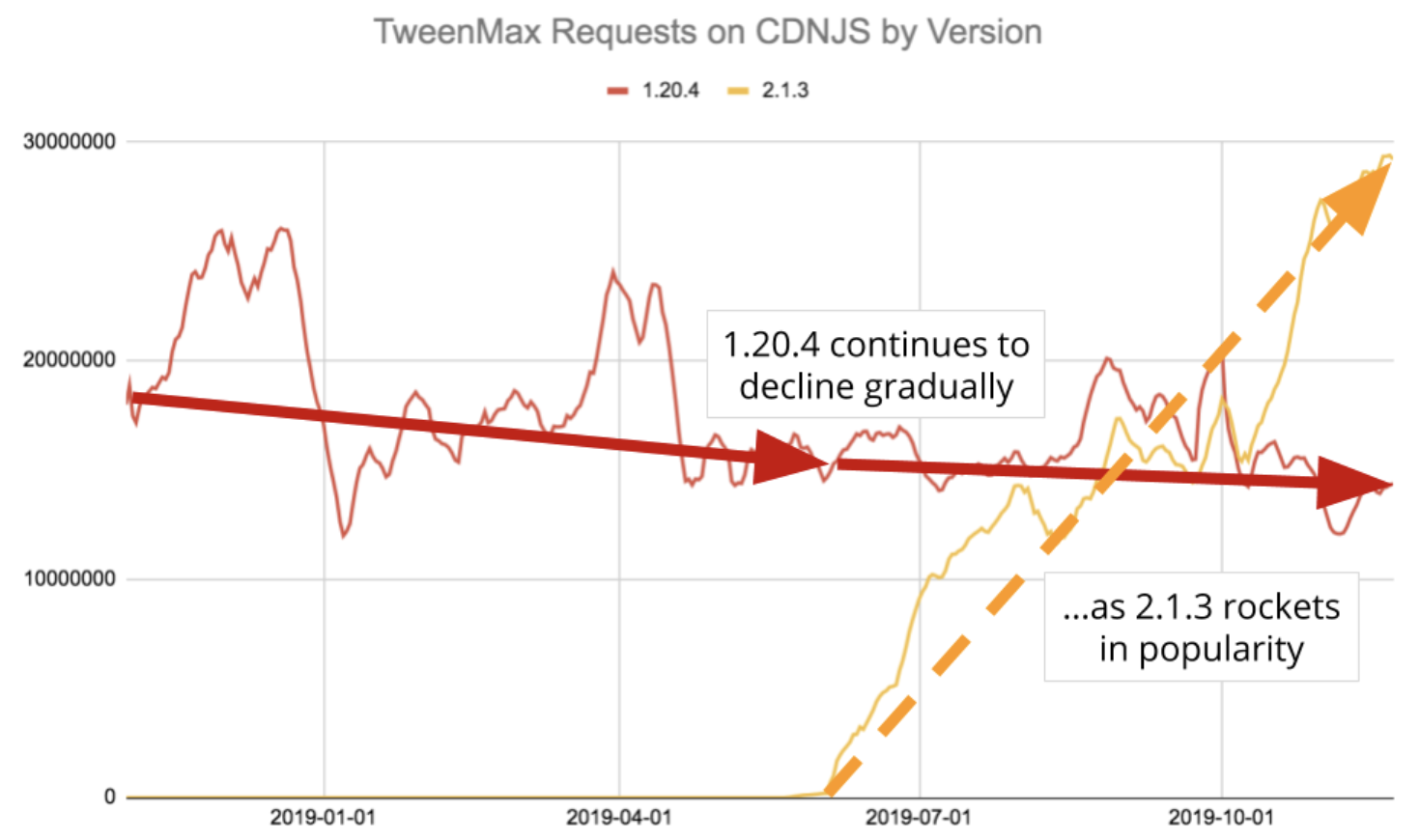
Cloudflare helps run CDNJS, a very popular way of including JavaScript and other frontend resources on web pages. With the CDNJS team’s permission we collect anonymized and aggregated data from CDNJS requests which we use to understand how people build on the Internet. Our analysis today is focused on one question: once installed on a site, do JavaScript libraries ever get updated?
Let’s consider jQuery, the most popular JavaScript library on Earth. This chart shows the number of requests made for a selected list of jQuery versions over the past 12 months:
Spikes in the CDNJS data as you see with version 3.3.1 are not uncommon as very large sites add and remove CDNJS script tags.
We see a steady rise of version 3.4.1 following its release on May 2nd, 2019. What we don’t see is a substantial decline of old versions. Version 3.2.1 shows an average popularity of 36M requests at the beginning of our sample, and 29M at the end, a decline of approximately 20%. This aligns with a corpus of research which shows the average website lasts somewhere between two and four years. What we don’t see is a decline Continue reading

When you loaded this blog, a file was delivered to your browser called jquery-3.2.1.min.js. jQuery is a library which makes it easier to build websites, and was at one point included on as many as 74.1% of all websites. A full eighteen million sites include jQuery and other libraries using one of the most popular tools on Earth: CDNJS. Beginning about a month ago Cloudflare began to take a more active role in the operation of CDNJS. This post is here to tell you more about CDNJS’ history and explain why we are helping to manage CDNJS.
Virtually every site is composed of not just the code written by its developers, but also dozens or hundreds of libraries. These libraries make it possible for websites to extend what a web browser can do on its own. For example, libraries can allow a site to include powerful data visualizations, respond to user input, or even get more performant.
These libraries created wondrous and magical new capabilities for web browsers, but they can also cause the size of a site to explode. Particularly a decade ago, connections were not always fast enough Continue reading

If you have seen our other post you know that we released WARP to the last members of our waiting list today. With WARP our goal was to secure and improve the connection between your mobile devices and the Internet. Along the way we ran into problems with phone and operating system versions, diverse networks, and our own infrastructure, all while working to meet the pent up demand of a waiting list nearly two million people long.
To understand all these problems and how we solved them we first need to give you some background on how the Cloudflare network works:
The Cloudflare network is composed of data centers located in 194 cities and in more than 90 countries. Every Cloudflare data center is composed of many servers that receive a continual flood of requests and has to distribute those requests between the servers that handle them. We use a set of routers to perform that operation:

Our routers listen on Anycast IP addresses which are advertised over the public Internet. If you have a site on Cloudflare, your site is available via two of these addresses. In this case, I am doing a DNS query Continue reading
If you want to start an intense conversation in the halls of Cloudflare, try describing us as a "CDN". CDNs don't generally provide you with Load Balancing, they don't allow you to deploy Serverless Applications, and they certainly don't get installed onto your phone. One of the costs of that confusion is many people don't realize everything Cloudflare can do for people who want to operate in multiple public clouds, or want to operate in both the cloud and on their own hardware.
Cloudflare has countless servers located in 180 data centers around the world. Each one is capable of acting as a Layer 7 load balancer, directing incoming traffic between origins wherever they may be. You could, for example, add load balancing between a set of machines you have in AWS' EC2, and another set you keep in Google Cloud.
This load balancing isn't just round-robining traffic. It supports weighting to allow you to control how much traffic goes to each cluster. It supports latency-based routing to automatically route traffic to the cluster which is closer (so adding geographic distribution can be as simple as spinning up machines). It even supports health checks, allowing it Continue reading


Power is the precursor to all modern technology. James Watt’s steam engine energized the factory, Edison and Tesla’s inventions powered street lamps, and now both fossil fuels and renewable resources power the trillions of transistors in computers and phones. In the words of anthropologist Leslie White: “Other things being equal, the degree of cultural development varies directly as the amount of energy per capita per year harnessed and put to work.”
Unfortunately, most of the traditional ways to generate power are simply not sustainable. Burning coal or natural gas releases carbon dioxide which directly leads to global warming, and threatens the habitats of global ecosystems, and by extension humans. If we can’t minimize the impact, our world will be dangerously destabilized -- mass extinctions will grow more likely, and mass famines, draughts, migration, and conflict will only be possible to triage rather than avoid.
Is the Internet the primary source of this grave threat? No: all data centers globally accounted for 2-3% of total global power use in recent years, and power consumption isn’t the only contributor to human carbon emissions. Transportation (mostly oil use in cars, trucks, ships, trains, and airplanes) and industrial processing (steel, chemicals, heavy manufacturing, Continue reading


The promise of the AMP (Accelerated Mobile Pages) project was that it would make the web, and, in particular, the mobile web, much more pleasant to surf. The AMP HTML framework was designed to make web pages load quickly, and not distract the user with extraneous content that took them away from focusing on the web page’s content.
It was particularly aimed at publishers (such as news organizations) that wanted to provide the best, fastest web experience for readers catching up on news stories and in depth articles while on the move. It later became valuable for any site which values their mobile performance including e-commerce stores, job boards, and media sites.
As well as the AMP HTML framework, AMP also made use of caches that store copies of AMP content close to end users so that they load as quickly as possible. Although this cache make loading web pages much, much faster they introduce a problem: An AMP page served from Google’s cache has a URL starting with https://google.com/amp/. This can be incredibly confusing for end users.
Users have become used to looking at the navigation bar in a web browser to see what web site Continue reading

Cloudflare has a cloud computing platform called Workers. Unlike essentially every other cloud computing platform I know of, it doesn’t use containers or virtual machines. We believe that is the future of Serverless and cloud computing in general, and I’ll try to convince you why.
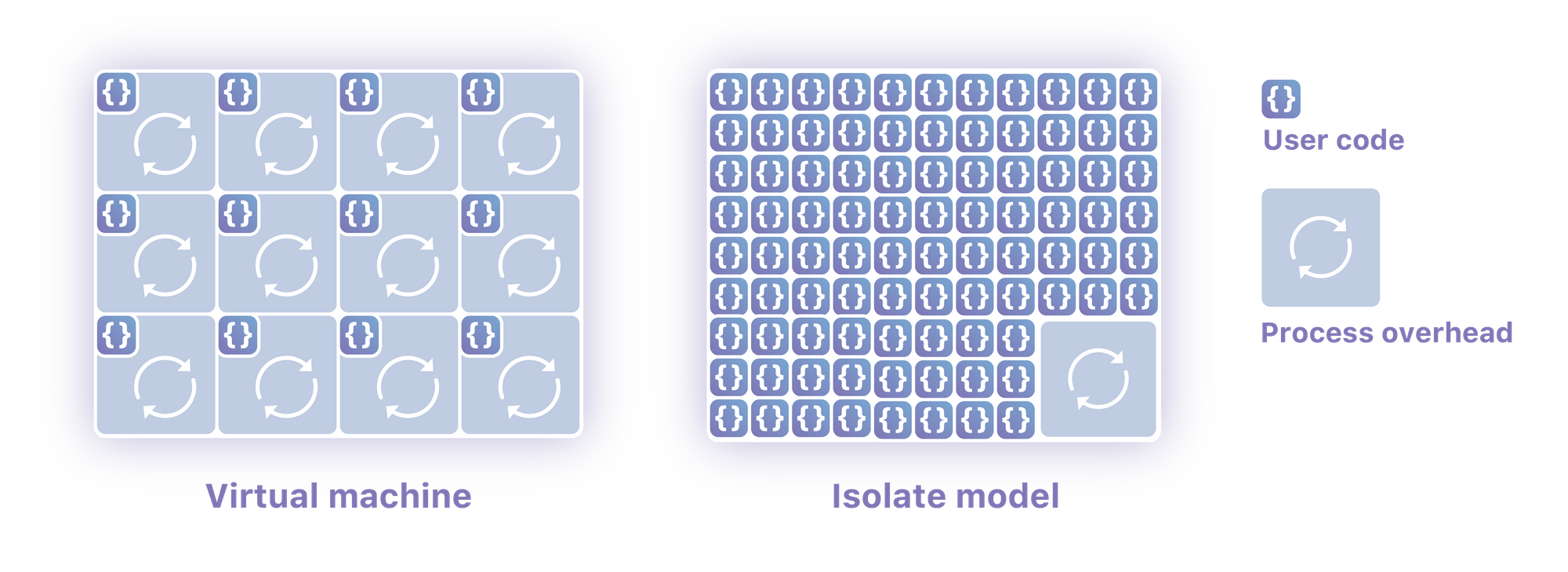
Two years ago we had a problem. We were limited in how many features and options we could build in-house, we needed a way for customers to be able to build for themselves. We set out to find a way to let people write code on our servers deployed around the world (we had a little over a hundred data centers then, 155 as of this writing). Our system needed to run untrusted code securely, with low overhead. We sit in front of ten million sites and process millions and millions of requests per second, it also had to run very very quickly.
The Lua we had used previously didn’t run in a sandbox; customers couldn’t write their own code without our supervision. Traditional virtualization and container technologies like Kubernetes would have been exceptionally expensive for everyone involved. Running thousands of Kubernetes pods in a single location would be resource intensive, doing it in Continue reading
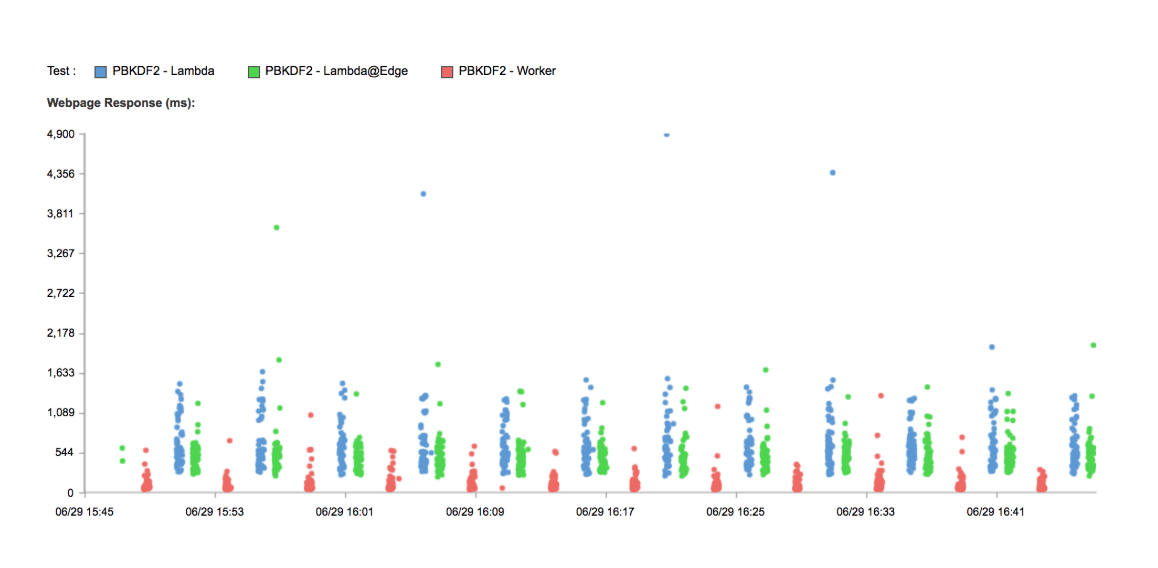
This post is a part of an ongoing series comparing the performance of Cloudflare Workers with other Serverless providers. In our past tests we intentionally chose a workload which imposes virtually no CPU load (returning the current time). For these tests, let's look at something which pushes hardware to the limit: cryptography.
tl;dr Cloudflare Workers are seven times faster than a default Lambda function for workloads which push the CPU. Workers are six times faster than Lambda@Edge, tested globally.
The PBKDF2 algorithm is designed to be slow to compute. It's used to hash passwords; its slowness makes it harder for a password cracker to do their job. Its extreme CPU usage also makes it a good benchmark for the CPU performance of a service like Lambda or Cloudflare Workers.
We've written a test based on the Node Crypto (Lambda) and the WebCrypto (Workers) APIs. Our Lambda is deployed to with the default 128MB of memory behind an API Gateway in us-east-1, our Worker is, as always, deployed around the world. I also have our function running in a Lambda@Edge deployment to compare that performance as well. Again, we're using Catchpoint to test from hundreds of locations around Continue reading
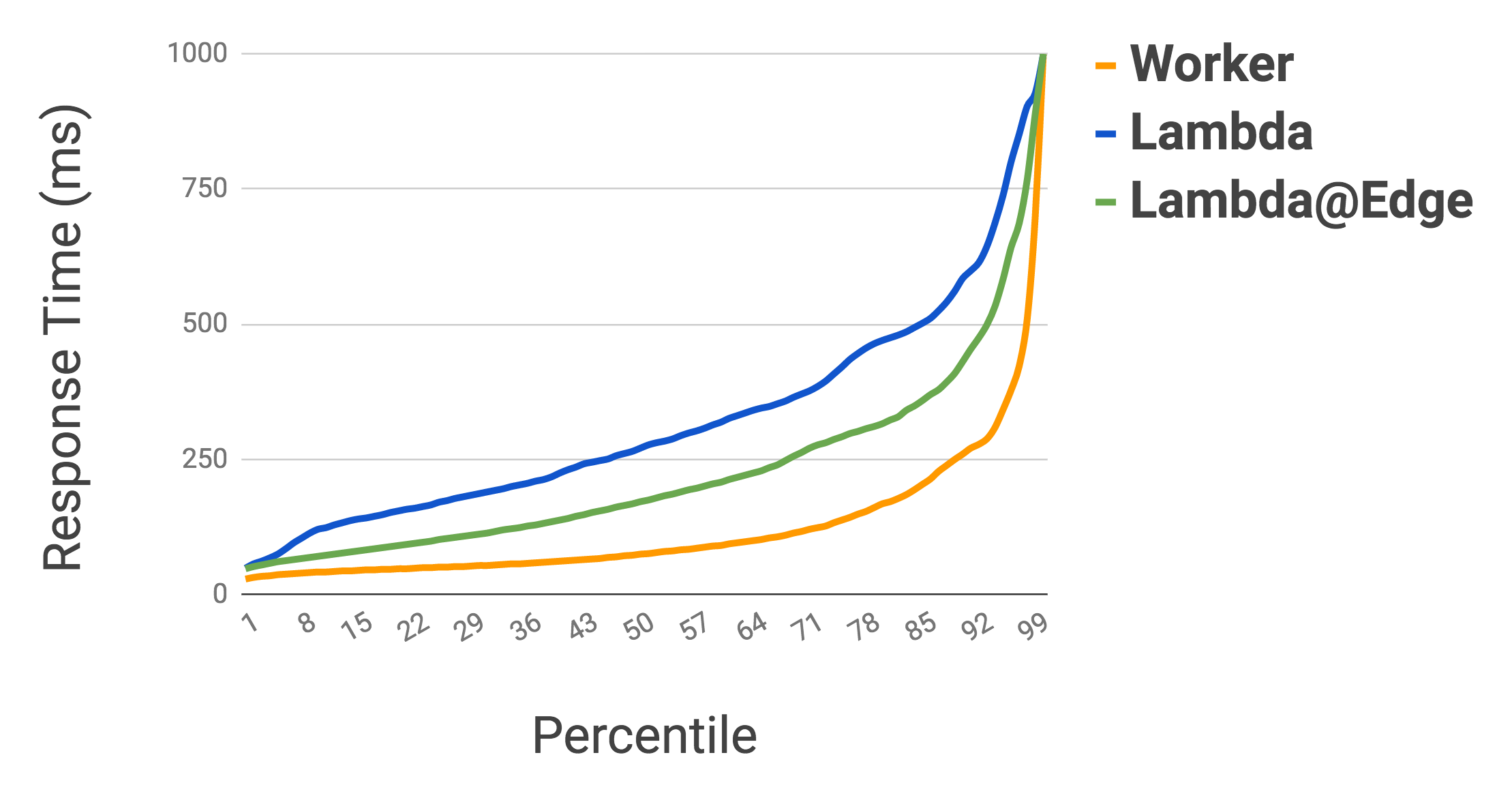
A few months ago we released a new way for people to run serverless Javascript called Cloudflare Workers. We believe Workers is the fastest way to execute serverless functions.
If it is truly the fastest, and it is comparable in price, it should be how every team deploys all of their serverless infrastructure. So I set out to see just how fast Worker execution is and prove it.
tl;dr Workers is much faster than Lambda and Lambda@Edge:
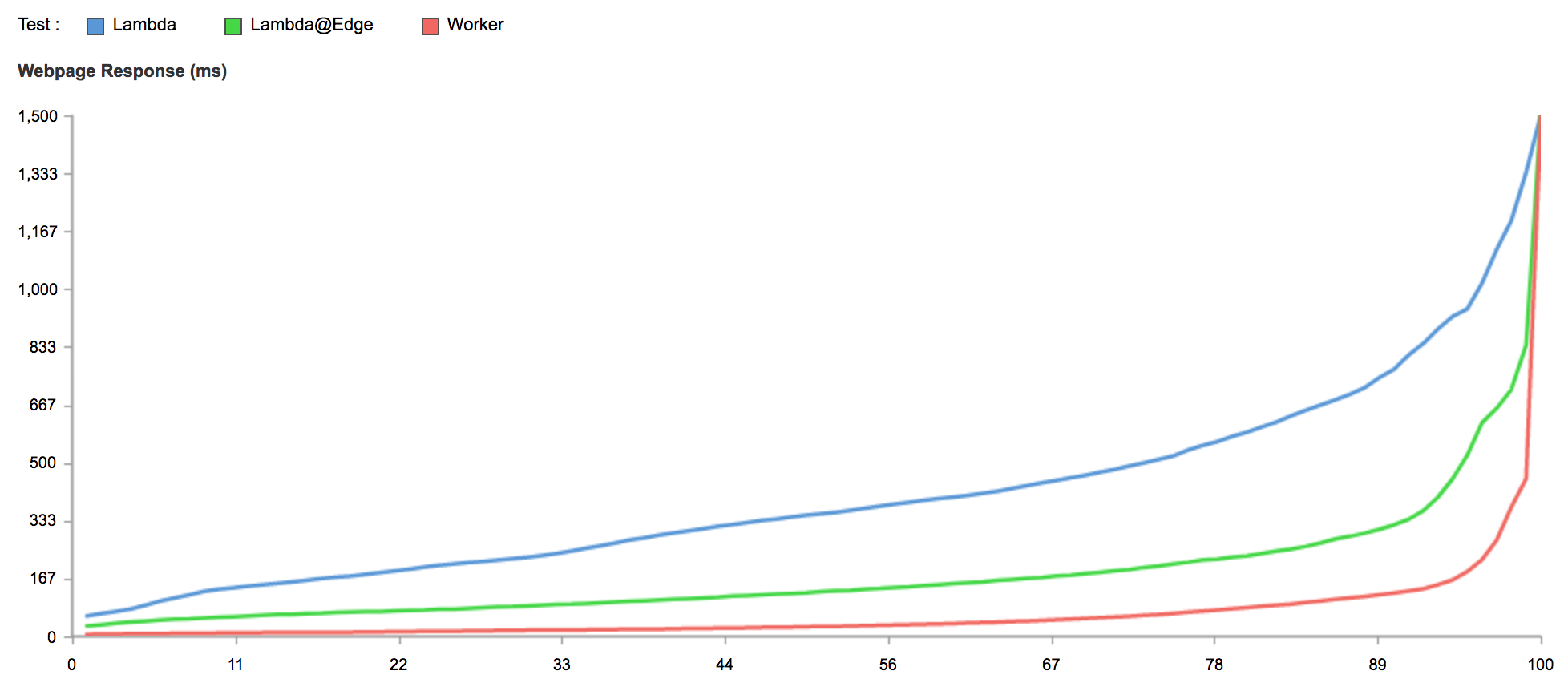
This is a chart showing what percentage of requests to each service were faster than a given number of ms. It is based on thousands of tests from all around the world, evenly sampled over the past 12 hours. At the 95th percentile, Workers is 441% faster than a Lambda function, and 192% faster than Lambda@Edge.
The functions being tested simply return the current time. All three scripts are available on Github. The testing is being done by a service called Catchpoint which has hundreds of testing locations around the world.
This is every test ran in the last hour, with results over 1500ms filtered out:
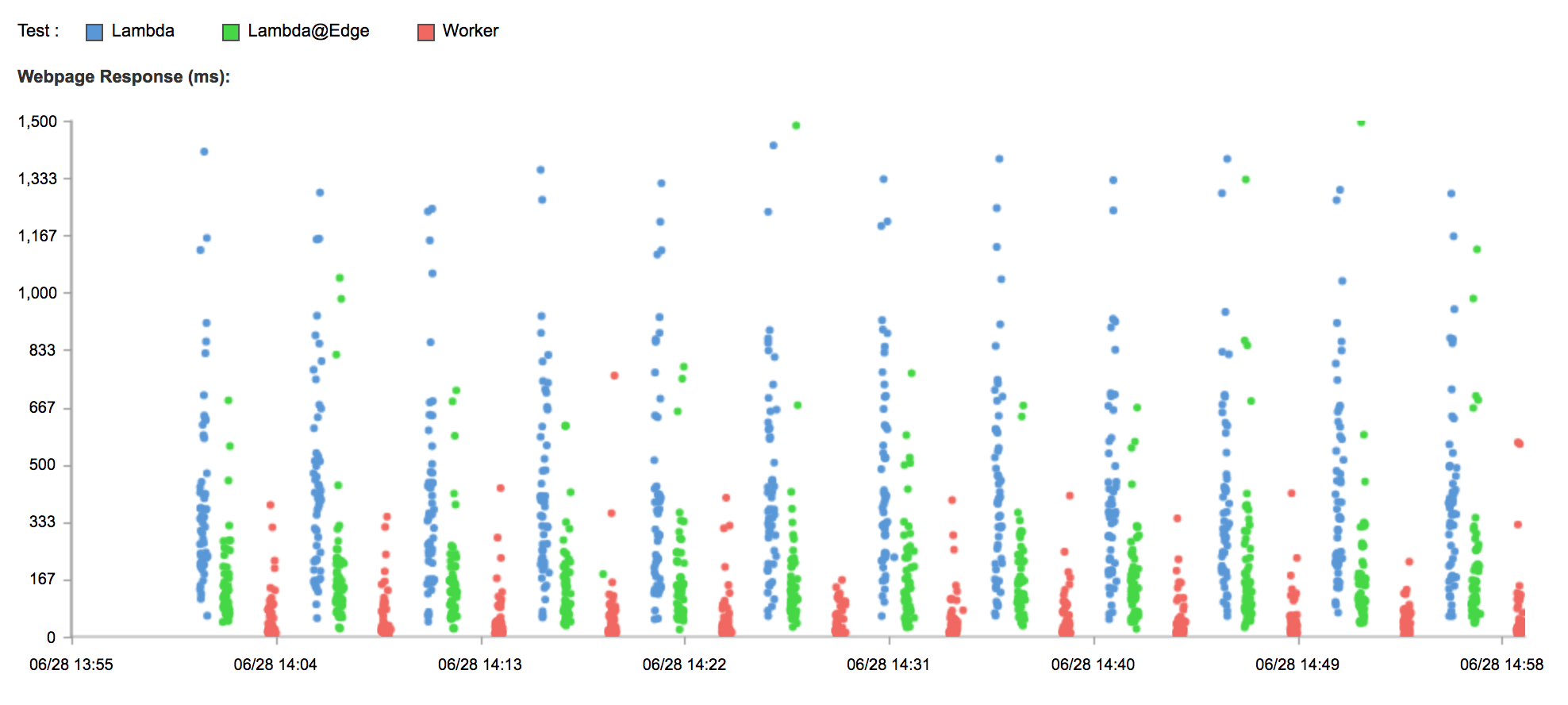
You can immediately see that Worker results are tightly clustered around the x-axis, Continue reading

In honor of all the fervor around Bitcoin, we thought it would be fun to revisit the role finance has had in the history of technology even before the Internet came around. This was adapted from a post which originally appeared on the Eager blog.
The issue was not the lack of a rapid communication system in France, it just hadn’t expanded far enough yet. France had an elaborate semaphore system. Arranged all around the French countryside were buildings with mechanical flags which could be rotated to transmit specific characters to the next station in line. When the following station showed the same flag positions as this one, you knew the letter was acknowledged, and you could show the next character. This system allowed roughly one character to be transmitted per minute, with the start of a message moving down the line at almost 900 miles per hour. It wouldn’t expand to Toulouse until 1834 however, Continue reading

In honor of all the fervor around Bitcoin, we thought it would be fun to revisit the role finance has had in the history of technology even before the Internet came around. This was adapted from a post which originally appeared on the Eager blog.
The issue was not the lack of a rapid communication system in France, it just hadn’t expanded far enough yet. France had an elaborate semaphore system. Arranged all around the French countryside were buildings with mechanical flags which could be rotated to transmit specific characters to the next station in line. When the following station showed the same flag positions as this one, you knew the letter was acknowledged, and you could show the next character. This system allowed roughly one character to be transmitted per minute, with the start of a message moving down the line at almost 900 miles per hour. It wouldn’t expand to Toulouse until 1834 however, Continue reading

This was adapted from a post which originally appeared on the Eager blog. Eager has now become the new Cloudflare Apps.
QWERTYUIOP
— Text of the first email ever sent, 1971
The ARPANET (a precursor to the Internet) was created “to help maintain U.S. technological superiority and guard against unforeseen technological advances by potential adversaries,” in other words, to avert the next Sputnik. Its purpose was to allow scientists to share the products of their work and to make it more likely that the work of any one team could potentially be somewhat usable by others. One thing which was not considered particularly valuable was allowing these scientists to communicate using this network. People were already perfectly capable of communicating by phone, letter, and in-person meeting. The purpose of a computer was to do massive computation, to augment our memories and empower our minds.
Surely we didn’t need a computer, this behemoth of technology and innovation, just to talk to each other.

The history of computing moves from massive data processing mainframes, to time sharing where many people share one computer, to the diverse collection of personal computing devices Continue reading
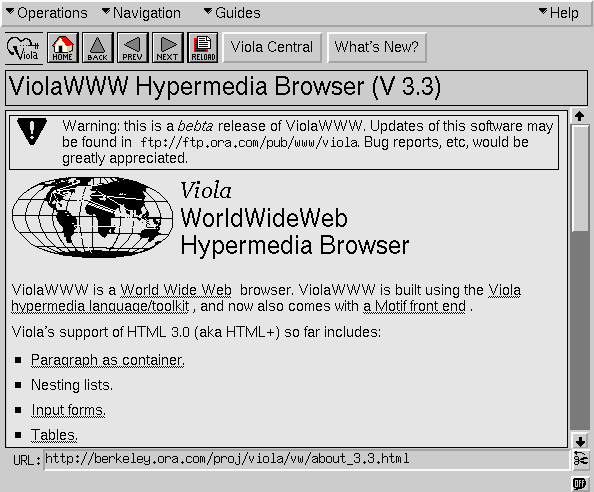
This was adapted from a post which originally appeared on the Eager blog. Eager has now become the new Cloudflare Apps.
In fact, it has been a constant source of delight for me over the past year to get to continually tell hordes (literally) of people who want to – strap yourselves in, here it comes – control what their documents look like in ways that would be trivial in TeX, Microsoft Word, and every other common text processing environment: “Sorry, you’re screwed.”
— Marc Andreessen
1994
When Tim Berners-Lee announced HTML in 1991 there was no method of styling pages. How a given HTML tag was rendered was determined by the browser, often with significant input from the user’s preferences. To Continue reading

Like most of you, I first heard of Cloudflare via this blog. I read about HTTP/2, Railgun, the Hundredth Data Center, and Keyless SSL — but I never thought I would work here. I, along with my co-founder Adam, and our friends and coworkers were hard at work building something very different. We were working on a tool which spent most of its life in the web browser, not on servers all around the world: an app store for your website. Using our tool a website owner could find and install any of over a hundred apps which could help them collect feedback from their visitors, sell products on their site, or even make their site faster.
Our goal was to create a way for every website owner to find and install all of the open-source and SaaS tools technical experts use everyday. As developers ourselves, we wanted to make it possible for a developer in her basement to build the next great tool and get it on a million websites (and make a million dollars) the next day. We didn’t want her to succeed because she had the biggest sales or marketing team, or the most Continue reading